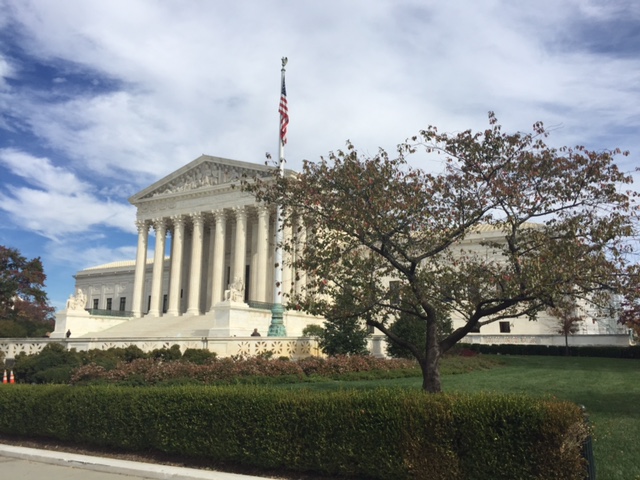 Washington DC.
Washington DC.Having my luggage, I Uber-ed my way to my hotel. Boutique hotel next to the Capitol. Nice place. Quaint pastel-painted row houses nearby. French bistro, too. A 30-somthing hipster lady was checking out as a host brought her a few knickknacks to munch on for breakfast. The smartly dressed man behind the front desk had an Australian or South African accent. Or was he from Belize? I couldn't tell. Relaxed. Confident. Good eye contact. He checked me in.

This is the life of a policy wonk, I caught myself thinking.
My room was larger than I needed, the bathroom tiny, but functional. I pulled back the curtain and saw the many marble buildings surrounding the hotel and blocked the viewed of the streets further away that I remembered weren't quite so inviting. Lots of construction in view. Booming. I wondered if any of the other people who frequented this establishment ever saw the very different life that exists in rural areas outside the Beltway.
Probably not.
No matter. It was Washington. Time to explore. Crisp air. School kids bursting with excitement and rushing to the street corner, starry-eyed. Ever-patient chaperons shouting they could only see the Capitol if they made two parallel lines. "Quiet, please! Line up. Come on, now." Others in dark suits walking the streets. High heels with lanyards and name badges. People walking in tandem, sharing secrets, telling jokes. Black Towncars, Escalades with tinted glass, Mercedes. Large white buildings that dwarfed their visitors, like Poseidon looking down on a flotilla of tiny ships at sea. Supreme Court. Library of Congress. Madison, Jefferson, Dirksen, Hart, Cannon, Longsworth, Rayburn. White. Marble. Big. Powerful. At least so it seemed. Certainly not for the faint of heart. Security everywhere. Metal detectors. Strange white mechanical roadblocks that clanked up and down to let the Important People drive their beat-up Subaru over it to head home.
A foreign land for a practicing doctor. Almost surreal.
I had arranged to meet two colleagues before the introductory dinner gathering. Each a name on The List. We never met before but shared some emails once. Nice to put faces with the names. They were more seasoned in this environment than me. But real doctors. Not pretend. Independents. Just came from work. Drove all day or flew from far away. Eager to meet others. Passionate. Each with their story - a reason to be here. Certain they could speak to a piece of the puzzle. Frustrated with things but determined to do something. I settled in. We exchanged numbers. You on Twitter? Defiantly: "Why should I use a smartphone when a tiny flip phone will do?"

* sigh * Reality.
Soon we headed to the introductory dinner. Staffers handing out sticky paper name tags that never seem to stick. (Except to things they shouldn't.) Pleasant smiles. A glass of wine. Pasta on the menu. Mingle. Where are you from? I see. The Congressman will be here a bit later. Then the Congressman arrived. Thanks for coming. Relax. Enjoy your stay. Tomorrow we'll show you our plan. Want to get your ideas, feedback. What brings you to Washington?
Would what I had to say make any difference? There was another plan. Another agenda. Mine? Very small, unimportant. One doctor with a few others in a big very big pond, treading water, learning to swim. Would this be worth it? Others seemed to think so.
I still wasn't sure.
